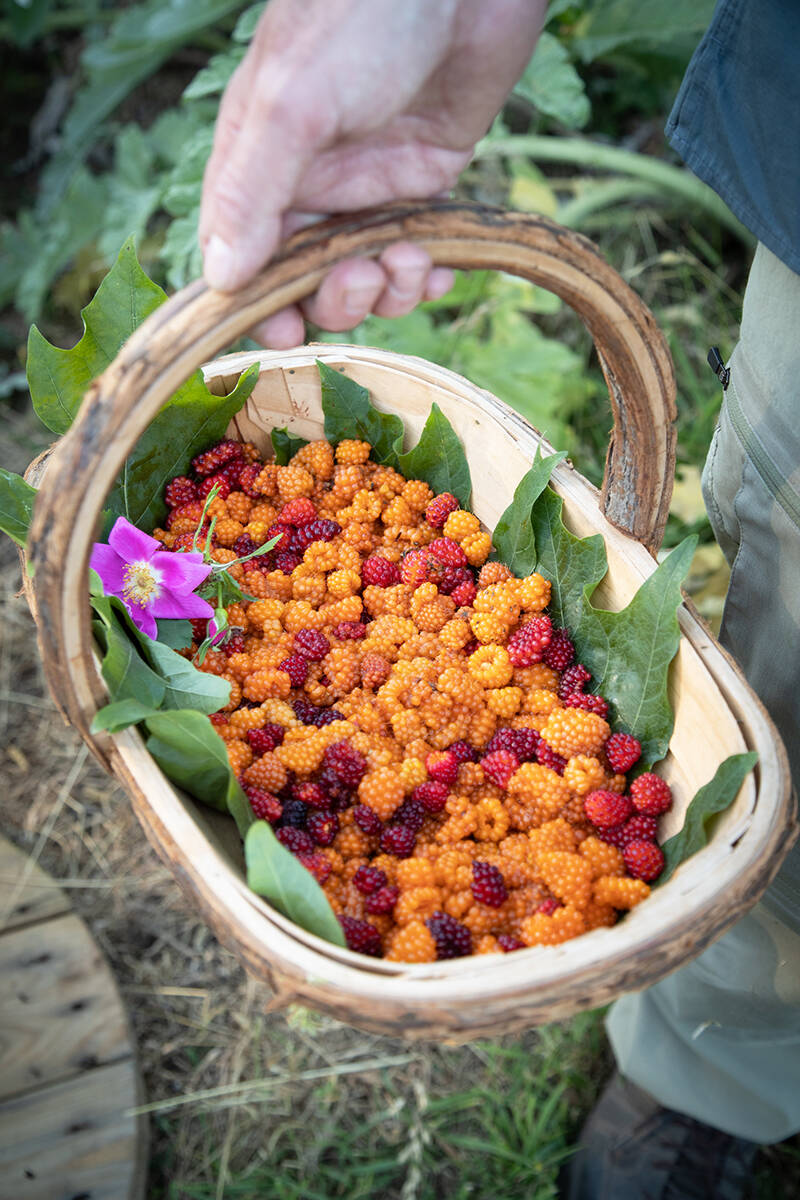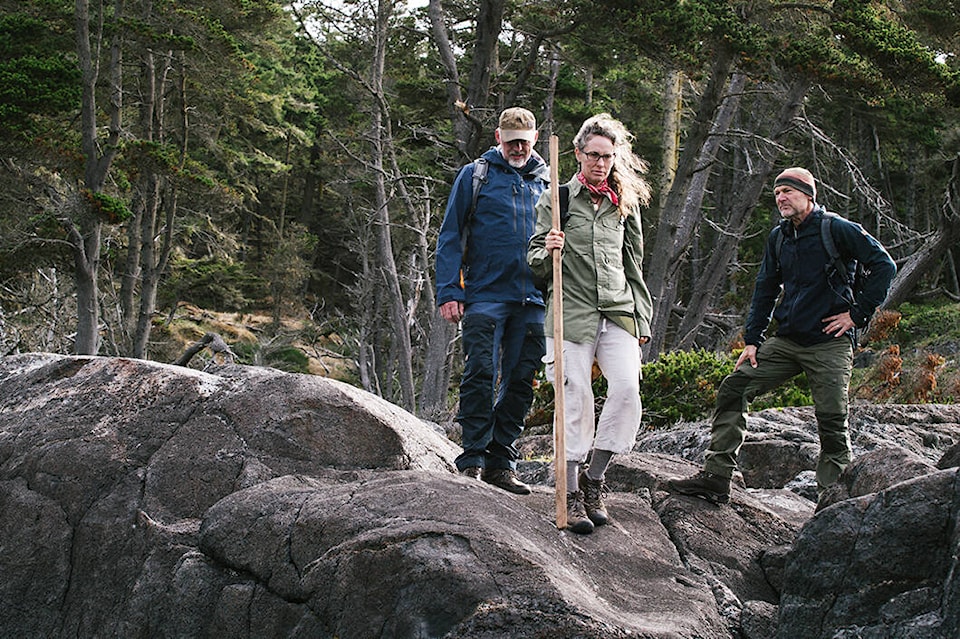If you go out in the woods today you may find the fixings for a gourmet feast, with a little help from a few experts in their field.
That’s the premise behind Wild Harvest, the latest offering from documentary filmmaker Les Stroud, whose work during a career spanning 30 years includes the popular series Survivorman.
For Wild Harvest, Stroud has collaborated with chef Paul Rogaliski and Fiona Hamersley Chambers, an ethnobotanist and owner of Metchosin Farm.
“The skills required to recognize and gather locally foraged products has always been one of my favourite topics,” Stroud said in a telephone interview with the Gazette.
The series, in its second season, travels all over North America in search of locally foraged ingredients, including stops in Alberta, Washington State, Oregon, Florida and California, and locally in Metchosin and East Sooke.
“By working with Paul, the series became not just about gathering,” Stroud said. “People learn how to transform the ingredients into a delicious gourmet meal in a way they can follow.”
ALSO READ: DND doing controlled burns at Rocky Point in Metchosin
Rogaliski, co-owner of Rouge Restaurant in Calgary, is an internationally acclaimed gastronomic leader who finds inspiration in locally sourced ingredients and the natural environment, through collaborations with those who share his passion.
Kevin Kossowan, an accomplished cameraman, outdoorsman and survivalist well known for his work on Into the Wild, handles the filming.
Stroud said filming during the pandemic didn’t present any significant challenges because everyone was fully vaccinated, “out in nature and very careful about how we travelled.”
The veteran documentarian has worked with Hamersley Chambers, plant consultant for the series, on a variety of projects since 2013.
“That led to us saying, ‘let’s come to your area and film there,’” said Stroud, who has also worked on Shark Week productions for the Discovery Channel and documentaries on grizzlies with National Geographic.
“Fiona makes certain we get all the plant information correct,” he said. “She’s one of the best in the world at what she does, no one gets it better than her. I’m trying to educate the viewer and need to be certain it’s completely accurate, and that wouldn’t be possible without working with someone as highly skilled as Fiona.”
Hamersley Chambers, who teaches ethnobotany at the University of Victoria, said Stroud’s original love and passion is for wild plants.
ALSO READ: Swan Lake biologist to share how Saanich residents can better connect to nature
“After Survivorman took off like a race car, he’s been looking for a long time to get back to his roots, pun intended,” she said. “I helped ID the plants and poisonous lookalikes. Some plants are toxic, but only at certain stages of growth. A good example is fiddleheads. All are mildly toxic when they’re raw, but when you cook them the heat denatures the toxin.”
In her role, Hamersely Chambers focused on not only safely identifying the plants, but teaching Stroud and the show’s viewers how to steward and look after these species, including how to prune a plant while harvesting to ensure they grow better and healthier next year.
“As well as plant propagation basics like transplanting, hardwood cuttings and seeding, this helps people understand that wild species can often be healthier for having been harvested than left untended and wild,” she said. “I really appreciate the opportunity that Wild Harvest and Les have offered me to teach these skills that promote stewardship and reciprocity to a large audience, no matter where they call home.”
Although the majority of her work was via FaceTime, email and phone, Hamersley Chambers took part directly in two episodes filmed in June and relished the opportunity to work together with the crew in Metchosin and East Sooke.
“Working with this team is amazing,” she said. “Having them at Metchosin Farm to highlight the richness and diversity of what we grow here was a privilege. The two episodes were a unique opportunity to feature the importance of food security, which begins with seeds and also ethically harvested wild-harvested food.”
A cookbook and foraging guide are currently being written for Wild Harvest’s website.
Wild Harvest is scheduled to complete filming for this season in October. It airs on Cottage Life in Canada and PBS in the U.S., with episodes also available on YouTube.
For more on Stroud, visit lesstroud.ca. To find out more about the 260 seed crops and more than 35 soft fruit varieties Hamersley Chambers nurtures, visit metchosinfarm.ca.
rick.stiebel@goldstreamgazette.com
Â
Do you have a story tip? Email: vnc.editorial@blackpress.ca. Follow us on on Twitter and Instagram, and like us on Facebook.




